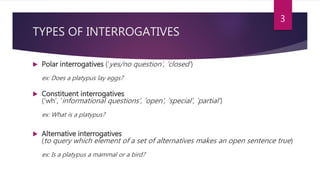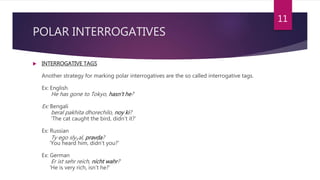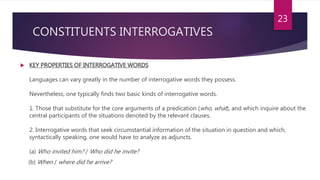The document explores interrogative constructions in languages, defining them as grammatical forms used to ask questions. It categorizes them into polar, constituent, and alternative interrogatives, while discussing derivation strategies such as intonation, interrogative particles, and constituent order. Additionally, it examines the properties and usages of interrogative words across different languages.




























